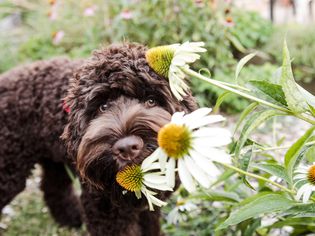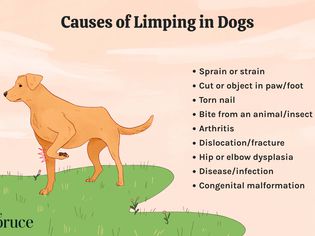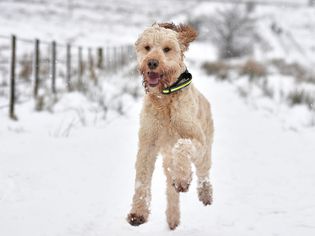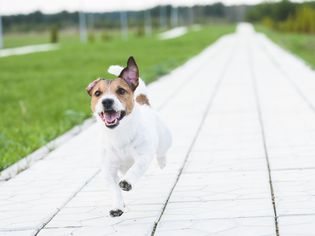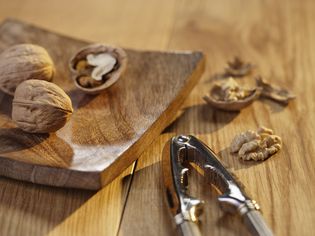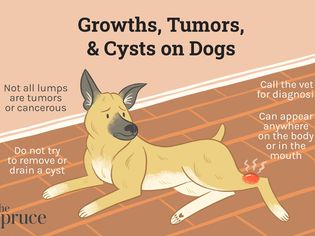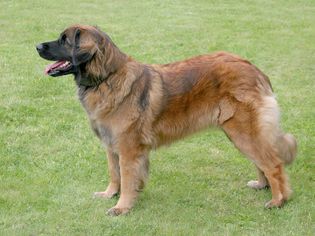Anal gland infections are common, but uncomfortable conditions in dogs. While the exact purpose for these glands is unknown, it is thought that wild dogs used them for territory marking and protection, similar to skunks. When these scent-producing anal glands become infected, you'll need to take quick action to avoid serious consequences.
What Is Anal Gland Infection?
Anal gland infection is a condition that causes painful swelling and foul-smelling discharge from sacs near a dog's rear end. An anal gland infection can affect your dog, prompt scooting behavior, and needs veterinary attention.
All dogs have two anal glands, or sacs, located beneath the skin at about eight and four o'clock on either side of the anus. The pea-sized glands are similar to a skunk's scent organs.
Symptoms of Anal Gland Infection in Puppies
The glands secrete a liquid or creamy brownish-yellow substance that may smell good to your puppy but can be quite offensive to humans. Fortunately, anal glands usually self-express whenever the dog passes a stool.
While most dogs don't require help with anal gland maintenance, others have overactive sacs that can cause an odor problem or are unable to express their anal glands frequently enough and these dogs need help keeping the glands expressed. The symptoms of anal gland infection can be quite evident.
Fishy Odor
Anal glands also may be expressed when the dog suddenly contracts the anal sphincter, the circular muscle that controls the anus. The contraction can happen when your pup is frightened or stressed. You’ll notice a pungent, fishy odor quite different than the odor from flatulence.
Bloody Secretions
When infected, the secretions from the glands will contain blood or pus.
Rectal Swelling
In severe cases, an abscess may develop at the site, characterized by a soft red to purple hairless swelling on one or both sides of the rectum.
Excessive Licking Near Rectum
The area on one or both sides of the rectum will swell and your dog may lick or bite the area to relieve the discomfort.
Scooting
You may see your puppy scooting or dragging its bottom on the floor. This is one way your dog is trying to clear the blockage.
Fever
Your puppy may have an abscess due to an anal gland infection. Dogs with an abscess may run a fever and feel ill.
What Causes Anal Gland Infection in Puppies?
In the wild, dogs would empty these glands regularly, but many domestic animals seem to have lost the ability to empty these glands voluntarily which can lead to a build-up of secretions that can become infected. There are a few other causes of anal gland infection.
Sacs Failing to Empty
Smaller breeds typically develop impacted anal glands when the sacs fail to empty normally. It is unknown why smaller dogs are more predisposed, though genetics likely plays a role as these dogs have been domesticated further from their ancestors than large breed dogs.
Soft Stool
Impacted anal glands may also be due to soft stools or diarrhea that fail to supply enough pressure to empty the sacs.
Allergies
Dogs with allergies are also more likely to develop anal gland problems as their glands are over-reactive and produce more secretions. These secretions can become pasty and thick when not regularly expressed and plug the normal exit.
How Do Vets Diagnose Anal Gland Infections in Puppies?
This condition is quite painful, so your veterinarian will conduct a careful examination that involves a rectal exam. In addition, the doctor may try a manual expression to collect the secretions for further examination.
How to Treat Anal Gland Infection
Left untreated, impacted anal glands can become painfully infected. The treatment involves a few steps that are best monitored by a veterinarian, though you may need to learn how to administer a few treatments at home.
- Manual expression: The treatment in all instances is a manual expression of the anal glands. When the glands are infected, your veterinarian will need to treat the dog. The area can become so sore that the dog needs sedation for the procedure.
- Antibiotics: Infected anal glands need to be expressed regularly and an antibiotic infused directly into the sac itself. Ointments like Panalog work well. The tip of the tube is inserted into the sac opening, and the gland is filled with the medicine. Usually, it's best if your veterinarian applies the medication to the anal gland. An oral antibiotic administered at home may also be prescribed and you’ll need to learn how to give a pill to your dog.
- Compress treatment: Warm, wet compresses applied to the infected area for 15 minutes two or three times daily will help the infection resolve more quickly. Soak a washcloth with warm water and have your dog sit on it. Pet your dog or offer a chew toy to keep your pup occupied during the compress treatment.
- Surgical lancing: Infected anal glands may abscess which often requires surgical lancing so that the infection inside can be flushed out and drained away. The incision is left open so that the wound will heal from the inside out. The dog will also need antibiotics.
Prognosis for Puppies With Anal Gland Infection
In most cases, the abscess heals without complications. Puppies that suffer recurrences of impaction or infection require that their anal glands be expressed on a regular basis, usually every four to six weeks. In some instances, surgical removal of the problem glands may be necessary.
How to Prevent Anal Gland Infection
For routine anal gland maintenance, you can learn how to express anal glands yourself, or you can have it done by your veterinarian. A veterinarian or vet tech can usually express the glands more fully by performing a rectal procedure. This will reduce the frequency with which expression needs to be performed. If you or your groomer perform the procedure, the gland is expressed from the outside only.
It’s best to ask your vet or the dog groomer for a demonstration first. Improper manipulations of the glands can force the matter deeper into the tissue, causing further problems, so asking a professional to maintain your pup’s anal gland health is also a wise option.

